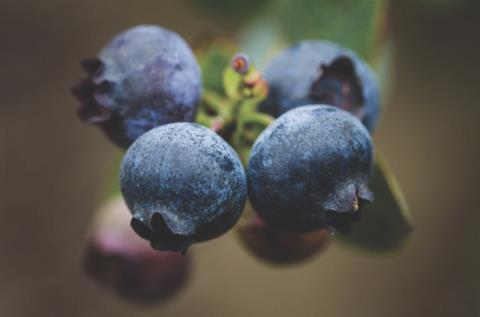Scotiabank forecast said increased planted area, improved farming techniques and better varieties behind hike
Peruvian blueberry exports are forecast to grow strongly in 2024/25, despite the sluggish start to the season. Consultants’ Fresh Fruit Peru said although exports started 2025 in the red – with shipments down 15 per cent in volume and a 41 per cent in value in January compared to the same month in 2024 – the outlook points to sustained growth this year.

Fresh Fruit said the contraction was related to a significant drop in the average price of the product, as well as a decrease in shipments to China.
However, Scotiabank has projected that the 2024/25 Peruvian blueberry campaign, which began in May of last year and will end next April, could see berry exports surpass the US$2bn mark, well up on the US$1.676bn shipped in 2023/24.
Katherine Salazar, an Economic Studies analyst at Scotiabank, said that the bank’s projections indicate that shipments of this blueberry could reach US$2.268bn by the close of the current campaign, which would be 22 per cent higher than in the previous campaign.
In volume terms, she expects shipments to reach 324,000 tonnes, a level similar to that projected by Proarándanos and 44.6 per cent higher than the 224,024 tonnes shipped in 2023/24.
Salazar noted that last season was slow due to complications following El Niño, whose high temperatures and heavy rainfall affected berry production on the northern coast.
The projected growth for this year, she explained, is due to a combination of factors, including an increase in planted hectares, improved cultivation techniques, and the diversification of varieties that are proving to be more productive.
The latter, she noted, is encouraging the adoption of innovative genetic programmes that ensure quality and competitiveness in the global market.
Salazar said Peru ranks second in the world for blueberry yields, surpassed only by Mexico. As a result, she noted, blueberries have become the main Peruvian agricultural export product, surpassing products such as grapes, avocados, and asparagus.
Regarding the export price, Salazar indicated that Scotiabank’s projection is for it to average US$7 per kg, 7 per cent lower than the record US$7.50 per kg seen last season.
So far this season the US market has absorbed 54 per cent of shipments, followed by Europe (24 per cent), China (14 per cent), and the UK (5 per cent). The remainder went to more than 30 countries.
Regarding varieties, Ventura predominates in the US and Europe, while in China, Sekoya Pop is the most in-demand cultivar.
Scotiabank projected that, in the medium term, the growth trend in blueberry exports should continue, driven by high international demand and Peru’s capacity to produce year-round.
The introduction of new varieties, planting techniques, and improved fruit quality would contribute to higher returns and maintain market competitiveness.
“These measures seek to ensure a constant, high-quality supply, adjusting to the demands of international consumers,” Salazar said.
Meanwhile, the National Agrarian Health Service (Senasa) has estimated that for the 2024/25 blueberry campaign, approximately 20,490ha of blueberries will be planted in Peru, 2,136ha more than in the previous campaign.



